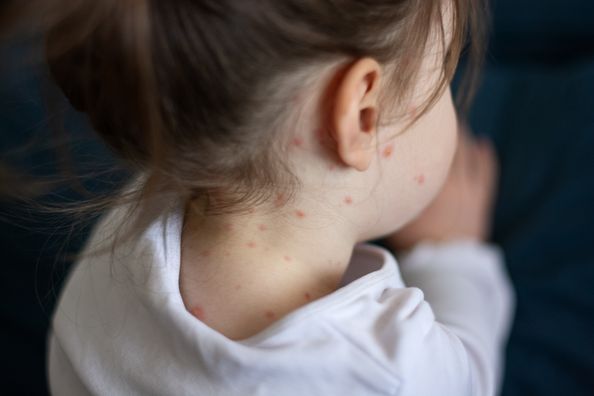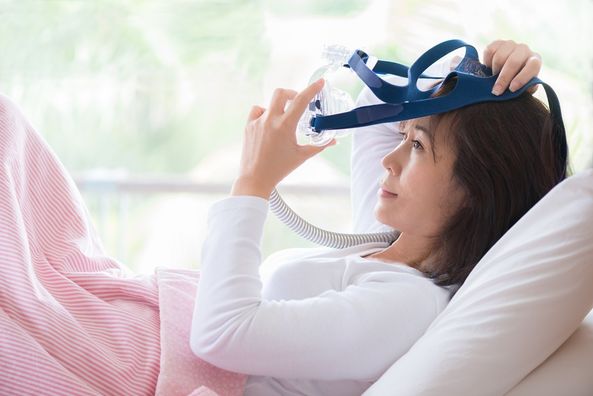Measles is making headlines again, and for good reason — it’s considered one of the most contagious viruses, and nine out of 10 susceptible people exposed to measles develop the disease.
As of March 13, 2025, the U.S. has seen 301 reported measles cases, surpassing the 285 cases reported in all of 2024. More than half of those affected are children under 18, and nearly all were unvaccinated. The virus doesn’t just cause a rash and fever — it can lead to serious complications, hospitalizations, and even death. So far, 36 people have been hospitalized, and tragically, two have lost their lives.
As measles spreads, it’s a reminder of how important protection is, especially if you are traveling internationally or to outbreak settings this Spring or Summer.
Measles Treatment & Vaccine
While there’s no specific cure for measles, it is preventable with the MMR vaccine (measles, mumps, rubella). This safe and highly effective vaccine is typically given in two doses: the first around 12 months old and the second between ages 4 and 5.
- First Dose: The first dose can be given to infants as young as 6 months old if they’re traveling to international areas that are higher risk. The first dose is about 93% effective at preventing the disease.
- Second Dose: The second dose can be given as early as 28 days after the first dose. The second dose is about 97% effective at preventing the disease.
If your child is too young to get a vaccine, the risk of measles exposure is still generally low in a highly vaccinated population. Pregnant women and patients with other contraindications should not receive the vaccine. The vaccine is considered to be quite safe, and adverse reactions are rare.
Anyone born before 1957 is considered immune to measles and does not require a vaccine, except in rare medical circumstances. It’s highly unlikely that individuals who previously contracted measles could contract it again. Anyone who received a two-dose series of the vaccine is considered immune.
Precautions When Traveling
If you’re planning to travel — whether within the U.S. or abroad — it’s important to take extra precautions to protect yourself and your family from measles. Outbreaks have been reported in several areas in 2025, including Texas and New Mexico, and crowded travel settings can increase the risk of exposure.
If you’re visiting an outbreak area either domestically or internationally, consider taking the following measures:
- Infants 6 – 11 months should be given an MMR before any international travel, to outbreak settings, or if they are at risk of coming in contact with any known person with measles. Travel doses are not counted in the standard series; additional doses are required after 12 months old.
- Children over 12 months old who received their first dose should receive a second dose at least 28 days after the first dose.
- Unvaccinated teenagers and adults should receive two doses of MMR at least 28 days apart.
- People traveling internationally, especially to countries with known measles outbreaks, should ensure they are up to date on all vaccinations.
In the event of a local outbreak, limit your infant’s exposure to crowds, other children, and anyone with respiratory (cold) symptoms. If you are concerned that you or your child has measles or were exposed, contact your doctor’s office for more information on what steps to take.
Planning a trip? Make sure your child has the proper vaccines before you go. Schedule an appointment with your pediatrician today!
How Measles is Spread
Measles spreads through infectious respiratory droplets, which enter the air through coughing or sneezing and can remain in the air and live on surfaces for two hours. Symptoms of measles may not appear for 8 – 12 days after exposure to the virus.
Those infected are contagious for about four days prior to the onset of the rash and for about four days after the onset of the rash. Below are contributing factors to the increase in measles cases:
- Travelers to the United States
- People returning from travel to other countries
- Spreading of the disease to persons who have not received a full vaccination series, including:
- Unvaccinated individuals
- Those under one year old who are too young to receive the standard vaccine
Symptoms of Measles
Common symptoms of Measles include:
- High fevers: Up to 105 degrees Fahrenheit that may last several days
- Runny nose
- Cough
- Conjunctivitis: Red, watery eyes
- Oral lesions: White-gray circles on the inside of the cheeks, also known as Koplick spots
A few days after the start of the fever, a rash will develop. The rash presents with flat pink/red spots that start near the hairline as well as on the face and then spread downward through the body. The infection can also cause pneumonia, which can be severe.
If you or your child have measles symptoms, call your doctor immediately to determine the best course of action. Seek emergency care if the symptoms are severe, such as difficulty breathing, a fever higher than 105 degrees, dehydration, or confusion.
Historically, about 10 – 15% of patients need to be admitted to the hospital due to the severity of symptoms, but that rate was higher — at about 50% — in the 2024 outbreak. The infection can also cause encephalitis (brain infection), in about 1/1000 cases, of which 80 – 85% will have permanent brain damage. The overall death rate for acute measles infection is 1 – 3 out of 1,000.
Additional Measles Resources
HealthyChildren.org, the American Academy of Pediatrics website for parents, has excellent articles on measles. Additional information is also available from the Centers for Disease Control and Prevention.
Health Topics:







